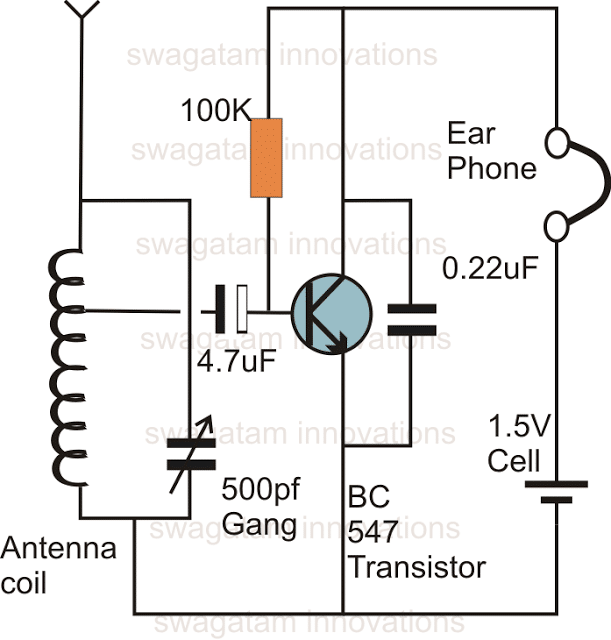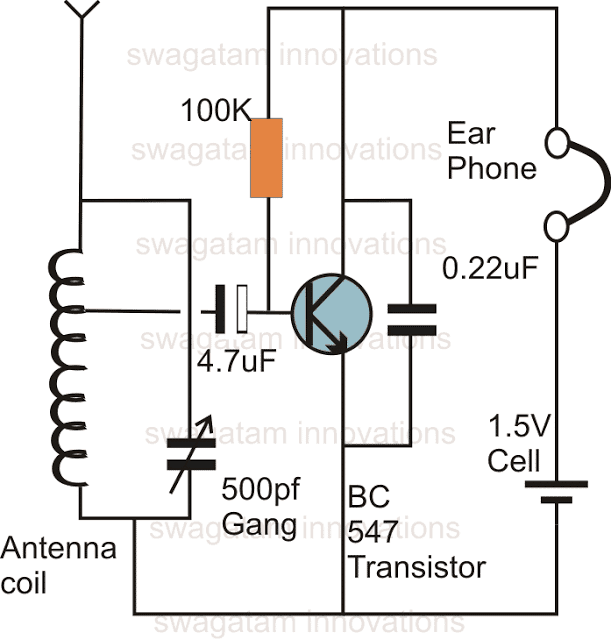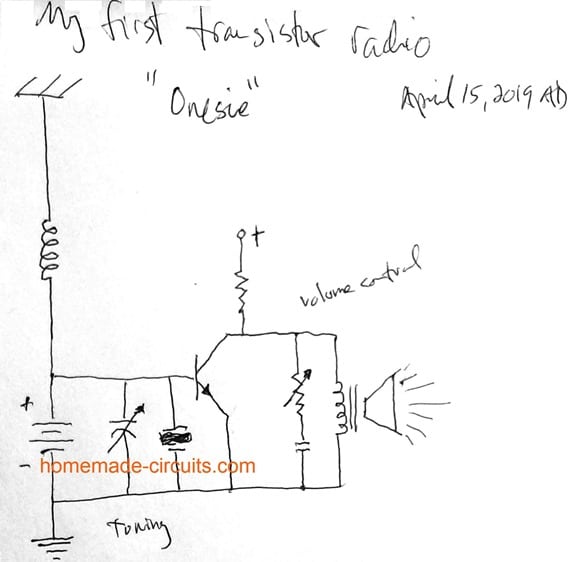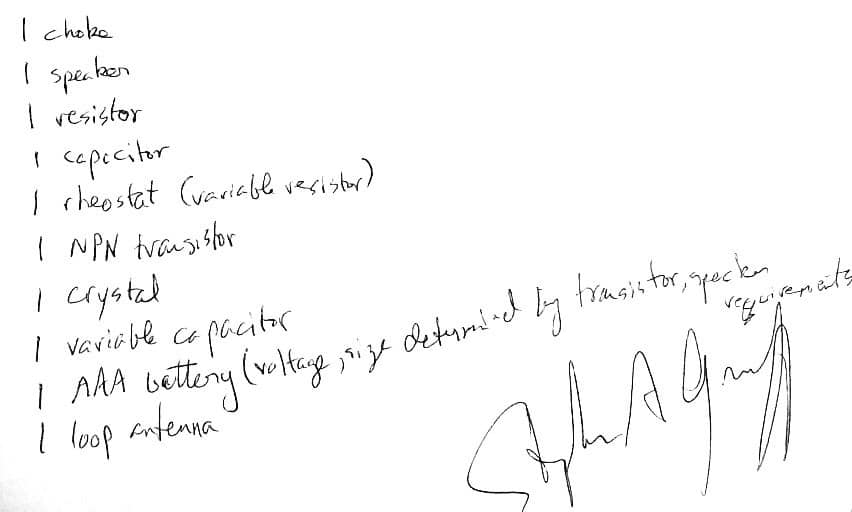
This is probably the simplest radio receiver circuit that one could ever imagine of making. The circuit is so simple that it could be finished assembling within a few minutes and you are already listening your favorite programs over it.
Introduction
What are the fundamental criteria associated with radio reception? An antenna stage, a band selector stage, a demodulator stage and a receiving element.When all of these come together radio reception becomes as simple as a piece of cake.
The circuit of a single transistor radio shown here though looks pretty ordinary, yet incorporates all the above stages and becomes just suitable for receiving the nearby radio stations.
However simplicity will always involve some drawbacks also, here the present design will be capable of receiving only strong stations and also selectivity might not be very pleasing, typically if there are a couple of strong stations mingling around the band.
Circuit Operation
The figure below shows how the single transistor radio can be made, we can clearly see that it just involves a single transistor as the main active component.A regular type of MW antenna coil has been used for collecting or sensing the MW receptions.
The coil is tuned using a GANG condenser or a variable capacitor which is connected in parallel to the antenna coil.The coil and the GANG together form a resonant tank circuit, which lock on to the received or the resonant frequency at a particular setting.
The concentrated but very low in power signal from the above LC tuned stage is fed to the base of the transistor which as performs the function of a demodulator as well as a amplifier stage.
The coupling capacitor at the base of the transistor makes sure only the radio information passes to the transistor while the DC component from the supply is appropriately blocked.
Headphone Becomes the Load and the Switch
A 64 Ohm headphone becomes the collector load of the transistor, where the demodulated and amplified signal is applied.
When connected, the received signals can be distinctly heard over the headphones with this little “audio marvel”Plugging in the headphone initiates the circuit and the circuit starts operating with its functions and the switches OFF itself when the headphone is removed from the circuit.
This eliminates the need of an external switch to be associated with the circuit, making the unit very compact.

The circuit requires just 1.5 V for operating which can be implemented using a single button type of cell.
You would also want to build this ONE TRANSISTOR FM RADIO CIRCUIT
Feedback from one of the avid readers of this blog, Mr. SA Genoff
Could you take a look at my 1st design of a single transistor radio ? Attached is a photo of my work.I have not studied Electronics extensively, just some undergraduate Physics and math. I know Ohm's law and am familiar with Maxwell's equations, but not conversationally.
Thanks so much for your work and webpages, Stephen A Genoff
My Reply:
Why there are two positives? Perhaps the battery should be replaced by the coil. Did you try it practically, how did it respond? The volume control part also may be incorrect according to me!




With over 50,000 comments answered so far, this is the only electronics website dedicated to solving all your circuit-related problems. If you’re stuck on a circuit, please leave your question in the comment box, and I will try to solve it ASAP!